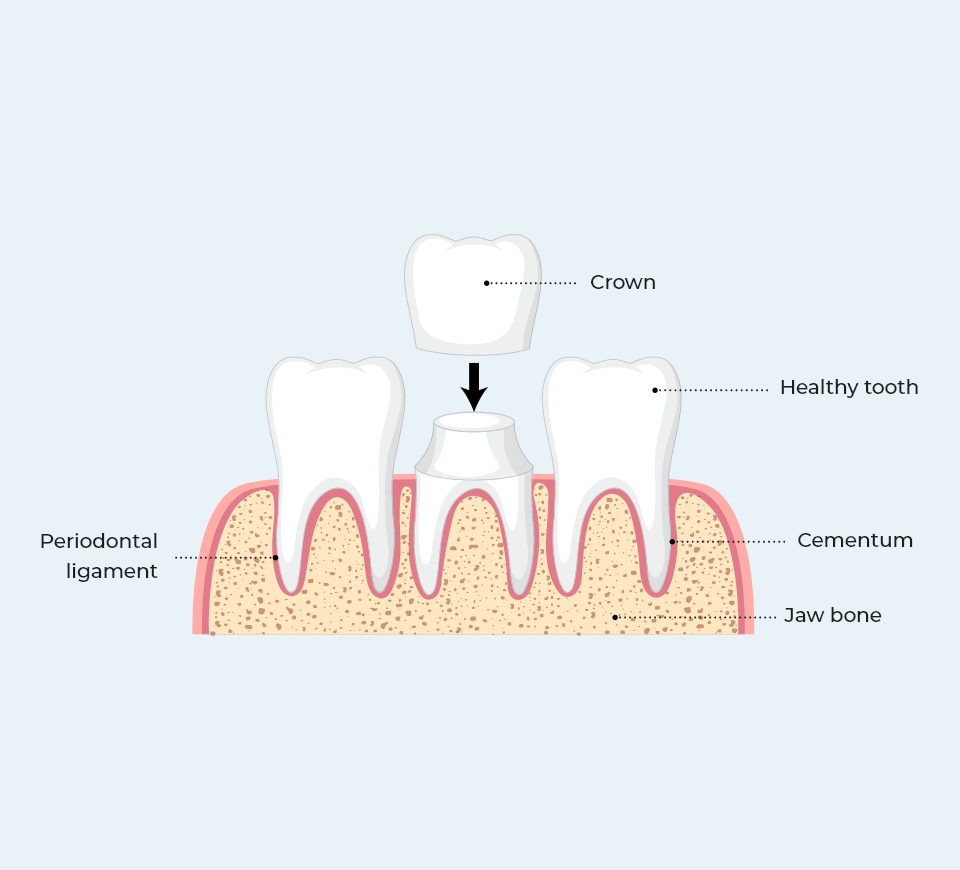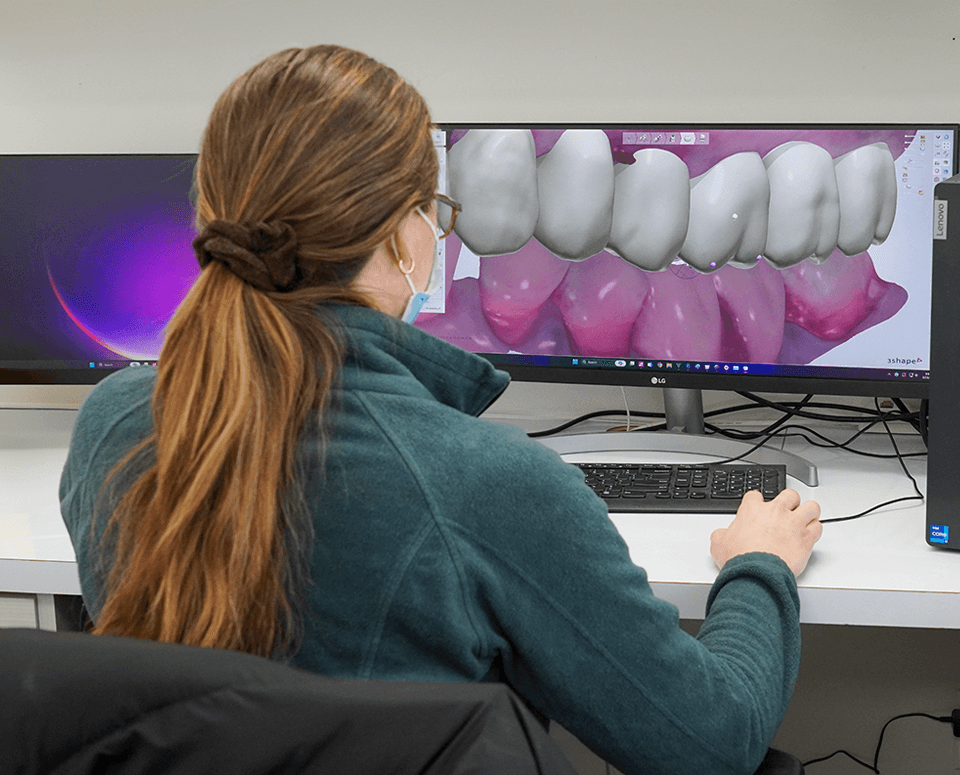What Is A
Dental Crown
Dental crowns are a tooth-shaped caps that are placed over a damaged or decayed tooth to restore its shape, size, strength, and appearance. It encases the entire visible portion of the tooth above the gum line.

When Are Dental Caps Necessary?
Decay Or Damage
Crowns are necessary when
a tooth is extensively decayed or
damaged beyond repair.
After Root Canal
Following root canal treatment, dental
crowns provide strength and protection to
the treated tooth.
Supporting Bridges
Crowns serve as support for
dental bridges, anchoring them securely in place.
Aesthetic Improvement
Misshapen or discolored teeth can be
enhanced with dental caps for a
more appealing smile.
Covering Implants
Tooth crowns are placed atop
dental implants to replace missing
teeth effectively.
Large Fillings
Teeth with large fillings can benefit
from crowns to prevent further
damage or fracture.
Tooth Crown Process
Prepatation
Your dentist will prepare the tooth by reshaping it to accommodate the crown.
Scanning
Digital impressions or traditional molds are taken to create a precise fitting crown.
Placement
A temporary crown is placed while your permanent crown is being crafted in the lab.
Finaliztion

Hate
Impressions?
We Can Take Digital Impressions
Dislike traditional dental impressions?
Our digital technology captures precise digital images without any messy materials in your mouth!
Options Galore
Island Dental Will Make You Smile

Lab On-Site
With our on-site dental lab, we craft custom dental solutions with speed and precision, ensuring you get a beautiful smile without the long wait!
Upgrade Your Smile With Dental Implants
For the ultimate and most durable smile restoration, dental implants offer a solution that can replace one tooth or an entire smile, providing teeth that are indistinguishable from your natural ones in appearance and feel.

No Insurance
No Problem
Free Exam and X-Rays*
we can
help you!
* Certain exclusions apply
New patients only
Patients without insurance
0%
Financing
95% Acceptance Rate
Flexible Payment Options
* Certain exclusions apply
Subject to credit approval
Island Dental
oogle Reviews
Thousands of 5-star reviews speak for themselves—our patients love their results, and you will too!


